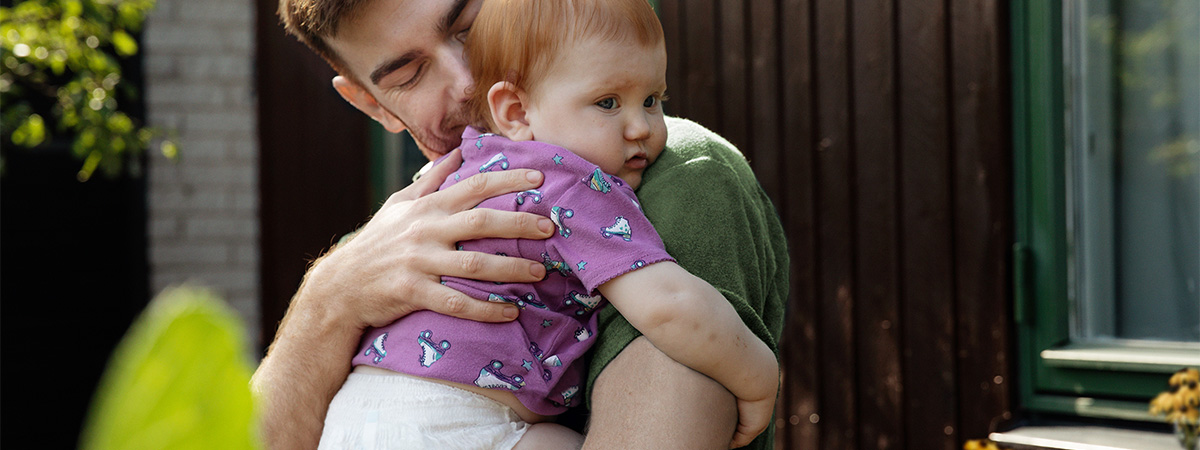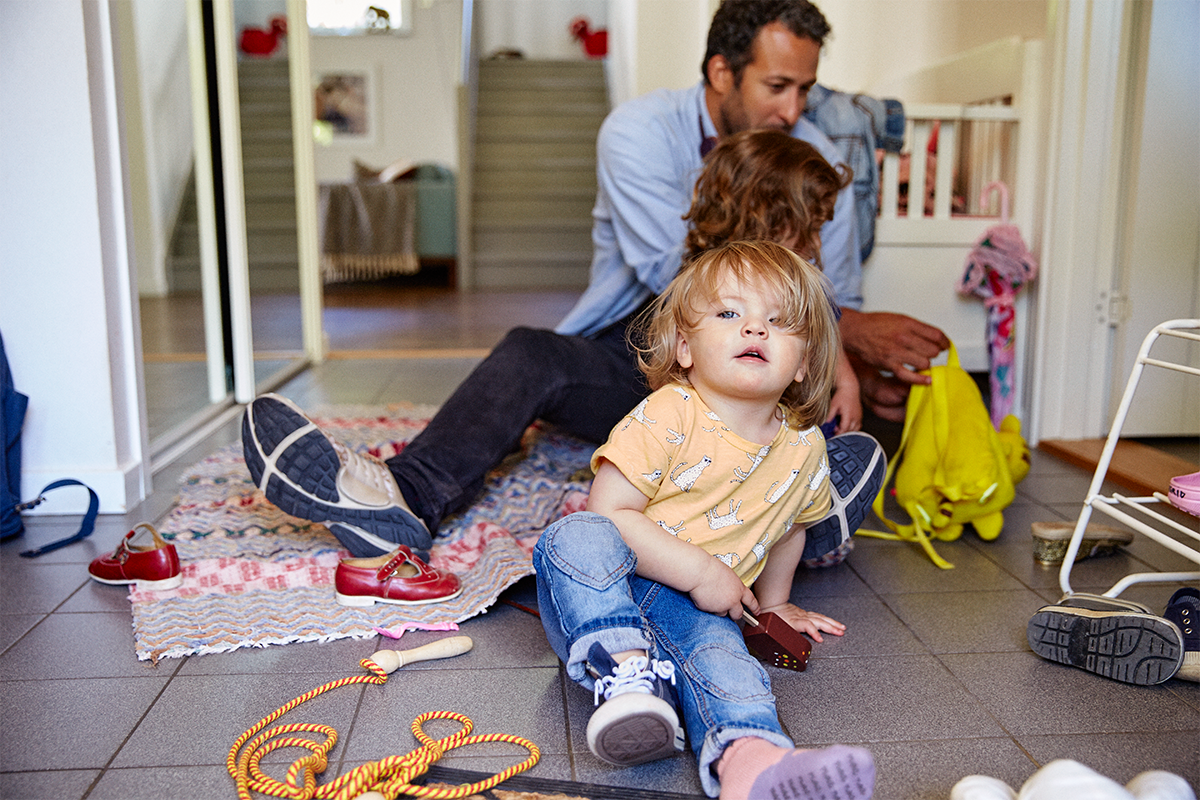Teething and your baby’s first teeth
How do you recognise signs of teething, and when should babies get their first teeth? Here is an article on children’s teeth, how old they are when they get them, and why it is so important to start brushing their teeth as soon as they have their small milk teeth.
A baby’s first teeth are called milk teeth. They almost look like small grains of rice when they first start to appear. But have you noticed that they are much whiter than the permanent teeth that arrive later? This is because they have thinner enamel than our “adult teeth”. There are varying theories on why a baby’s first teeth are called milk teeth – perhaps it is because the white colour of the first teeth is reminiscent of milk, or perhaps it is because the word milk is associated with the baby’s first food.
When do children usually get their teeth?
Many babies get their first teeth around the age of six months, but there is no guarantee that this will be the case for your baby. Some babies are actually born with teeth, while others don’t get any teeth until after their first birthday. Children usually have all their milk teeth by the age of three, and it is often around this time that you will receive notice of your child’s first visit to the dentist.
Signs of teething
Infants are affected by teething in different ways. Some hardly notice it at all, while for others it may cause them discomfort. There are a few signs which may suggest that your baby’s teeth are on the way, such as:
- The baby often puts its hand in its mouth.
- The baby drools.
- The baby is grizzly and fretful.
- The baby doesn’t sleep or eat as well as usual. This is quite common when a child starts teething.
- The baby has a slight fever. If your baby develops a fever for no apparent reason (e.g. he or she does not have a cold at the time), you should always check with the healthcare service to rule out other potential causes.
In what order do children’s milk teeth appear?
The two bottom front teeth usually appear first, and the two upper front teeth usually follow shortly after. Children usually also lose their milk teeth in roughly the same order a few years later. Once the front teeth have arrived, two canine teeth usually appear on either side of them, first at the top and then at the bottom. In total, children get 20 milk teeth which should last for several years.
When breastfeeding a baby who is teething or already has teeth, it can be quite painful if your little one bites into your breast. Sound familiar? Click on this link for some tips on what you can do about this.
How to help a teething child
If your child seems fretful or experiences pain when teething, it may help to try the following:
- Let your child have his or her own little toothbrush to gnaw on when needed. A children’s toothbrush is great for rubbing the gums when they itch during teething. This also helps children learn that a toothbrush should be placed in the mouth and that teeth must be brushed.
- Give your child a teething ring to chew on. Some teething rings can be chilled in the fridge, and it usually feels nice for the child if the teething ring is a little cold.
When should you start brushing your child’s teeth?
As soon as the first tooth breaks through, it is time to bring out the toothbrush and start brushing, both morning and evening. You may be wondering why it is necessary to brush teeth that will eventually just fall out anyway, but there are several good reasons for this. Firstly, it makes tooth brushing a natural routine for your child. Secondly, it is important to ensure that your child’s milk teeth last for many years, and because they have thinner enamel, they are more susceptible to tooth decay. And thirdly, if your child gets a hole in a milk tooth, it can sometimes affect the underlying permanent tooth, which is definitely something you want to avoid. So the golden rule is: brush morning and evening, and use a fluoride toothpaste suitable for young children.
8 tips on brushing your child’s teeth
Although there are children who love brushing their teeth, it is probably fair to say that, at least from time to time, most parents will find tooth brushing to be an activity that doesn’t make it onto their little one’s list of fun things to do! You may therefore find yourself in need of a little inspiration to make brushing your child’s teeth go more smoothly, in which case the following eight tips may prove helpful:
- Find a position to stand or sit that feels comfortable for your child, for example on your lap.
- Use a soft toothbrush.
- Choose a children’s toothpaste with fluoride, and use roughly an amount of toothpaste that would fit on the fingernail of your child’s pinkie. Don’t give your child water directly after brushing, as toothpaste does more good when it is allowed to remain in the mouth.
- When children get a little older, tooth brushing should be allowed to take a little time (around 2 minutes), but for a very young child it is better to try to brush all the teeth quickly, so that the child does not become restless before you have had time to brush all the teeth.
- Let your child try holding the toothbrush. Even if he or she just sucks or chews on the toothbrush to begin with, it is still good for children to get used to having a toothbrush in their mouth.
- Most activities are more fun if accompanied by singing, so sing a tooth brushing song.
- You can also try placing your child in front of a mirror so that he or she can see what is happening.
- Tooth brushing is usually easier if you do it when your child is not overly tired or in a bad mood.
If your child knocks out or damages a tooth
If your child bangs his or her teeth against something, it is a good idea to go to a dentist for a check-up – even if they are “only” milk teeth that your child will eventually lose anyway. Sometimes a knock can damage the underlying tooth, although this may not become evident until the new tooth makes its appearance, which might not be for many years. Don’t forget to contact your insurance company if your child bangs a tooth on something, as the damage must be documented in the event of a possible later claim for compensation. If a milk tooth is completely knocked out, no attempt should be made to put it back in place, as this could damage the underlying permanent tooth. Instead, visit a dentist for a check-up of your child’s mouth, and above all else to ensure that the underlying permanent tooth has not been damaged when the milk tooth was knocked out.
When do children start losing their milk teeth?
The first milk teeth usually fall out when a child is between 5 and 7 years of age. They then continue to fall out, with the transition from milk teeth to permanent teeth often continuing until the teenage years.
Please note that all information above is based on Swedish recommendations.

